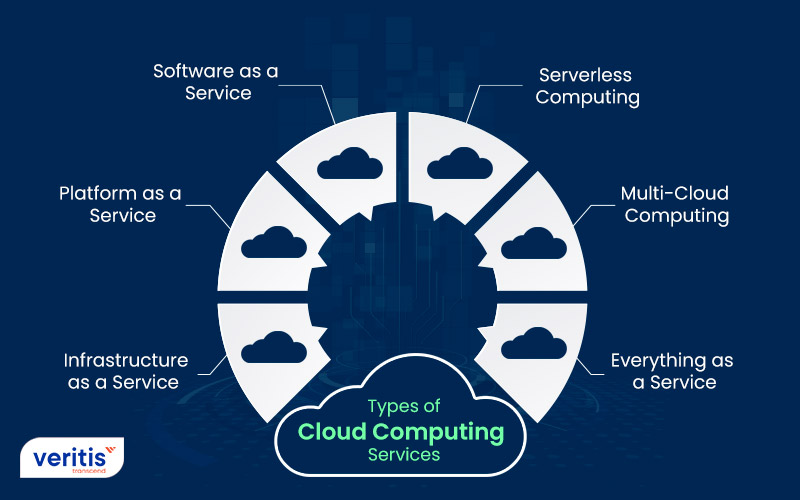Drive Innovation: Utilizing the Power of Cloud Provider
In the busy landscape of modern business, using the power of cloud services has become a critical component for organizations aiming to drive technology and maintain an affordable edge. The capacity to range resources dynamically, adopt sophisticated technologies seamlessly, and simplify advancement procedures effectively can considerably affect an organization's capacity to innovate and adjust. As we discover the detailed relationship in between cloud services and technology, interesting understandings on just how cloud solutions transform standard business practices and lead the way for groundbreaking developments will certainly be exposed.
Benefits of Cloud Services
Cloud services provide countless benefits to individuals and businesses looking for reliable and versatile remedies for their electronic requirements. Among the key advantages of making use of cloud solutions is the cost-effectiveness they provide. By relocating to the cloud, companies can eliminate the demand for pricey on-premises hardware and upkeep prices, rather opting for a pay-as-you-go version that aligns with usage. This scalability enables companies to readjust sources based on need, leading to optimal expense management.
In addition, cloud services enhance ease of access and partnership amongst groups. With information saved in the cloud, staff members can firmly access documents and applications from anywhere with an internet connection, advertising remote job capacities and enhancing productivity. Real-time collaboration attributes allow several individuals to service papers simultaneously, cultivating seamless team effort no matter of physical place.
Another advantage of cloud solutions is the boosted information security and disaster healing they offer. Cloud providers execute sophisticated safety actions to shield information from cyber risks, making sure compliance with market guidelines. Additionally, automatic back-ups and recuperation solutions minimize the danger of data loss because of unforeseen events, providing assurance to users.
Cloud Movement Strategies
Transitioning to cloud solutions involves careful planning and strategic execution to ensure a smooth and effective movement process. There are a number of cloud movement strategies that companies can consider when relocating their operations to the cloud. One common method is the 'Rehost' strategy, where applications are lifted and changed to the cloud with minimal adjustments. This approach fasts yet may not fully optimize cloud benefits. The 'Replatform' method involves making some cloud optimizations during movement, such as updating the application style to make the most of cloud-native attributes. universal cloud Service. For a more extensive makeover, the 'Refactor' technique involves rearchitecting applications to be cloud-native, boosting scalability and performance. Furthermore, the 'Repurchase' strategy includes changing existing software program with cloud-based options, while the 'Retire' technique entails decommissioning redundant applications. Picking the best movement strategy relies on variables like price, timeline, and desired outcomes, requiring a careful examination of each option's obstacles and advantages.
Enhancing Partnership in the Cloud
Enhancing team cooperation with cloud-based tools can substantially improve productivity and streamline interaction within companies. By leveraging cloud services, groups can function together seamlessly regardless of their physical places, allowing real-time collaboration on projects.

Security Factors To Consider for Cloud Adoption
How can organizations make sure the durable protection of their information when taking on cloud services? Security considerations Click This Link are paramount in the fostering of cloud solutions. To secure data, organizations need to initially carry out a complete danger assessment to determine prospective susceptabilities and dangers. Implementing solid security techniques for information both in transportation and at rest is important. Accessibility control devices ought to be established to limit unapproved entrance, and multi-factor verification can add an added layer of security. Regular protection audits and tracking of the cloud atmosphere help in detecting and mitigating any kind of security breaches without delay.

Cloud-Native Innovation Practices
In the realm of cloud computer, welcoming cloud-native innovation methods is critical for organizations striving to optimize their digital framework and improve functional performance. Cloud-native technology practices entail establishing applications specifically for cloud environments, leveraging the scalability, versatility, and dexterity that cloud solutions supply. By making applications with cloud-native principles in mind, such as microservices style, containerization, and orchestration, organizations can improve their growth procedures, enhance resource use, and react better to altering market demands.
In addition, cloud-native advancement techniques advertise constant integration and continual distribution (CI/CD) pipelines, enabling automated testing, release, and tracking of applications. This repetitive strategy cultivates faster innovation cycles and enhances general software high quality. Furthermore, using serverless computer and handled solutions allows organizations to focus on establishing core service functionalities while unloading framework management jobs to shadow company.
Basically, welcoming cloud-native innovation methods equips organizations to drive development, speed up time-to-market, and remain affordable in today's swiftly advancing electronic landscape.
Final Thought

As we explore the complex relationship in between cloud services and advancement, interesting understandings on how cloud remedies transform typical company practices and lead the means for groundbreaking improvements will certainly be revealed. - linkdaddy cloud services press release
There are several cloud movement approaches that organizations can consider when relocating their procedures to address the cloud. Cloud-native innovation techniques include establishing applications specifically for cloud environments, leveraging the scalability, flexibility, and agility that cloud services provide. Additionally, the use of serverless computing and took care of solutions allows organizations to focus on creating core business capabilities while offloading infrastructure administration jobs to shadow solution suppliers.
It is essential for business to think about cloud migration strategies, boost collaboration in the cloud, and prioritize safety and security actions to make certain successful fostering of cloud services and drive advancement within their organization.